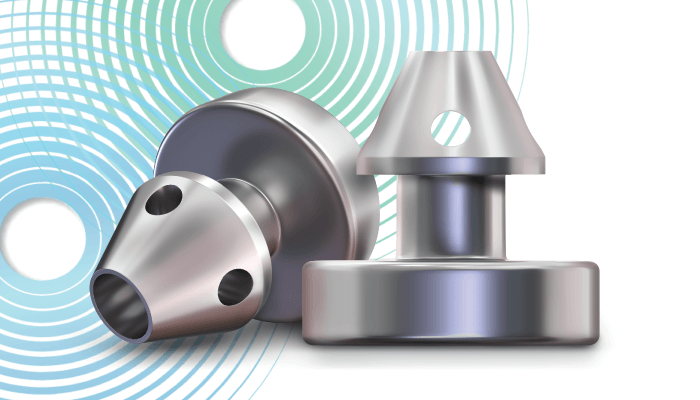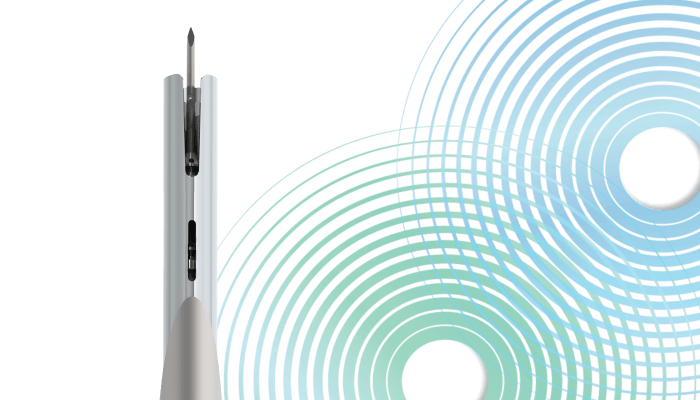
In ophthalmology, patients don’t always fit into neat categories; multiple comorbidities are not unusual. Sometimes, these coexisting conditions require treatment by different physicians with different skill sets. On other occasions, one surgeon may be able to treat two or more conditions – for example, cataract and glaucoma – in a single procedure, with significant synergies and economic benefits. We asked Fritz Hengerer, Director and Chief Medical Officer at the Department of Ophthalmology at Buergerhospital Eye Clinic in Frankfurt, Germany, to tell us more.
Why should we link cataract treatment and glaucoma treatment?
Firstly, because the conditions themselves are often linked in real life: in my own practice, about 15 percent of cataract patients also have glaucoma or ocular hypertension. And cataracts can interfere with glaucoma diagnosis; for example, lens opacification impedes retinal imaging and ophthalmoscopic evaluation of the optic disc, and the effects of cataracts on visual acuity can make perimetric evaluations unreliable. Therefore, it is helpful to address both cataracts and glaucoma as part of a single clinical management strategy – and now that safe and effective trabecular micro-bypass devices (such as iStent inject® W) are broadly available, we can do exactly that. If it is possible to address both cataracts and glaucoma symptoms within a single procedure, at a relatively early stage, why not do so? It just makes sense.
Describe your experience of using iStent technologies.
I have used the iStent inject® for over five years, both as a stand-alone procedure and in combination with phacoemulsification. My experience with this device is extremely positive: almost all patients achieve significant – and durable – IOP reduction, arrested glaucoma progression, and reduction in medication. These clinical and quality-of-life outcomes are consistent and are achieved with no significant long-term safety issues.
Given this advantageous risk-to-benefit ratio, I am happy to recommend iStent technologies to a broad range of patients with mild-to-moderate glaucoma. In addition, while not officially indicated, I will sometimes utilize iStent technologies for severe glaucoma cases and those for whom filtration surgery is unsuitable. In my view, iStent technologies close the gap between safe but sometimes ineffective approaches (such as medication and laser treatment) and effective but riskier approaches (such as filtration surgery).
Can you quantify iStent inject’s clinical impact?
I have published 36-month standalone iStent inject data showing 42 percent reduction in IOP and 82 percent reduction in medication, with 61 percent of patients becoming medication-free (1). The combination of iStent inject and phacoemulsification also gives excellent outcomes: IOP reduction of 37 percent and medication reduction of 30 percent. Importantly, over 90 percent of procedures (both stand-alone and combination) achieved IOP < 18 mmHg – an IOP value that is broadly accepted as the cut-off point for interruption of glaucoma progression and visual field decline (1).
Other groups report similar experiences: in Germany, a large study (164 eyes, 109 patients) reported reliable reduction of both IOP and IOP fluctuation (the latter being an independent risk factor for progression). Specifically, average IOP declined from 20.3 mmHg preoperatively to 14.9 mmHg two years post-surgery, while medication was reduced by 81 percent; these benefits were achieved without significant complications, stent occlusion, hyphema, or hypotony (2). Similarly, another group reported iStentassociated reduction of medications from an average of 1.48 to 0.19 (3).
The above clinical data are consistent with analyses suggesting that the iStent inject is cost-effective in terms of reduction of medication expenses and indirect expenditure. For example, a 2019 German budget impact model indicated that iStent inject for open angle glaucoma would be cost-saving, compared with trabeculectomy, over a three-year period, and suggested that combining iStent inject and cataract surgery in an outpatient setting could reduce costs still further (4). Furthermore, implantation of two trabecular microbypass stents may be superior, in terms of efficacy and long-term cost utility, to other MIGS approaches (5).
Any concluding remarks?
Surgeons should consider the benefits of combining cataract surgery with iStent inject W implantation. Advantages for the surgeon include time and cost savings; advantages for the patient include a single surgery experience, a single anesthesia, and a single post-operative appointment for both glaucoma and cataract treatment. Thus, integration of iStent inject W into cataract surgery for glaucoma patients allows us to kill two birds with one stone.

Why iStent inject?
Our glaucoma treatment options were limited to filtration surgery or laser plus eyedrops – and many patients don’t want either. We needed an alternative, so we started training with iStent inject in December 2017. We performed the first iStent inject procedure in January 2018 and, since then, the device has become a regular feature of our surgery.
How straightforward was iStent inject adoption?
Making the transition from cataract procedures to iStent inject implantations requires the surgeon to go through a training process: theory, dry lab and surgical support are all required. That said, if you are familiar with operating in the anterior chamber, there are probably only two significant challenges: i) optimal positioning of the patient to adequately visualize the trabecular meshwork (good visualization is central to iStent inject technique), and ii) manipulating the gonioscopy lens. The learning curve is steep, but short; once you are familiar with critical landmarks, the procedure is straightforward.
What do you see as the key features of iStent inject?
It’s elegant and very effective. In my experience, the success rate is achieved without obvious side-effects; it’s intrinsically safe – if you get the implantation position wrong, the worst thing that I have personally experienced is that nothing happens! Finally, the longterm upside is huge: my iStent inject patients have been able to maintain target IOP with fewer or no eyedrops.
How has iStent inject adoption affected patient flow and outcomes?
We found it simple to introduce into our standard routines, both as a stand-alone procedure and in combination with cataract surgery; in the latter context, it integrates elegantly. In terms of outcomes, it’s been very interesting to see that our results exactly reflect those of published, international studies; around 80 percent of patients achieve target IOP and can reduce or cease eyedrops (6, 7, 8, 9, 10). To me, that suggests that any skilled cataract surgeon can expect similar outcomes after adopting iStent inject, provided they respect the recommended indications and surgical technique.
Would you encourage other cataract surgeons to evaluate iStent inject?
Definitely. I have already presented my results at both the ASCRS and at national meetings in Norway, and several surgeons have come to my clinic to watch me perform iStent inject surgery. A number of those have now also adopted the iStent inject. I’m more than happy to show colleagues this proven safe and effective procedure that gives their glaucoma patients another therapeutic option.
References
- FH Hengerer et al., “Second-generation trabecular micro-bypass stents as standalone treatment for glaucoma: a 36-month prospective study,” Adv Ther, 36, 1606 (2019). PMID: 31119690.
- R Neuhann et al., “Second-generation trabecular micro-bypass stent implantation: Retrospective analysis after 12- and 24-month folow-up,” Eye Vis, (2020). PMID: 31938714.
- K Klabe, “Neuausrichtung der Glaukom Chirurgie durch neue chiriurgische Verfahren,” Artemis Symposium, September 16, 2020. Available at: www.artemisklinik.de.
- PM Buchholz et al., “Budget impact analysis of trabecular bypass stenting versus trabeculectomy for the treatment of open-angle glaucoma (OAG) from a German payer perspective,” Invest Ophthalmol Vis Sci, 60, 5452 (2019).
- J Bartelt-Hofer et al., “Comparative efficacy and cost-utility of combined cataract and minimally invasive glaucoma surgery in primary open-angle glaucoma,” Int Ophthalmol, 40, 1469 (2020). PMID: 32185590.
- TW Samuelson et al., “Prospective, randomized, controlled pivotal trial of an ab interno implanted trabecular micro-bypass in primary open-angle glaucoma and cataract,” Ophthalmology, 126, 811 (2019). PMID: 30880108.
- RAP Guedes et al., “Intermediate results of iStent or iStent inject implantation combined with cataract surgery in a real-world setting: a longitudinal mretrospective study,” Ophthalmol Ther, 8, 87 (2019). PMID: 30721523.
- CI Clement et al., “One-year outcomes following implantation of second-generation trabecular micro-bypass stents in conjunction with cataract surgery for various types of glaucoma or ocular hypertension: multicenter, multi-surgeon study,” Clin Ophthalmol, 13, 491 (2019). PMID: 30936680.
- D Manning, “Real-world case series of iStent or iStent inject trabecular micro-bypass stents combined with cataract surgery,” Ophthalmol Ther, 8, 549 (2019). PMID: 31422555.
- K Gundersen, “Initial clinical results after implantation of 2nd generation trabecular micro-bypass stents (iStent inject®) with cataract surgery.” Paper presented at the 2019 Congress of ESCRS; September 15, 2019; Paris, France.
